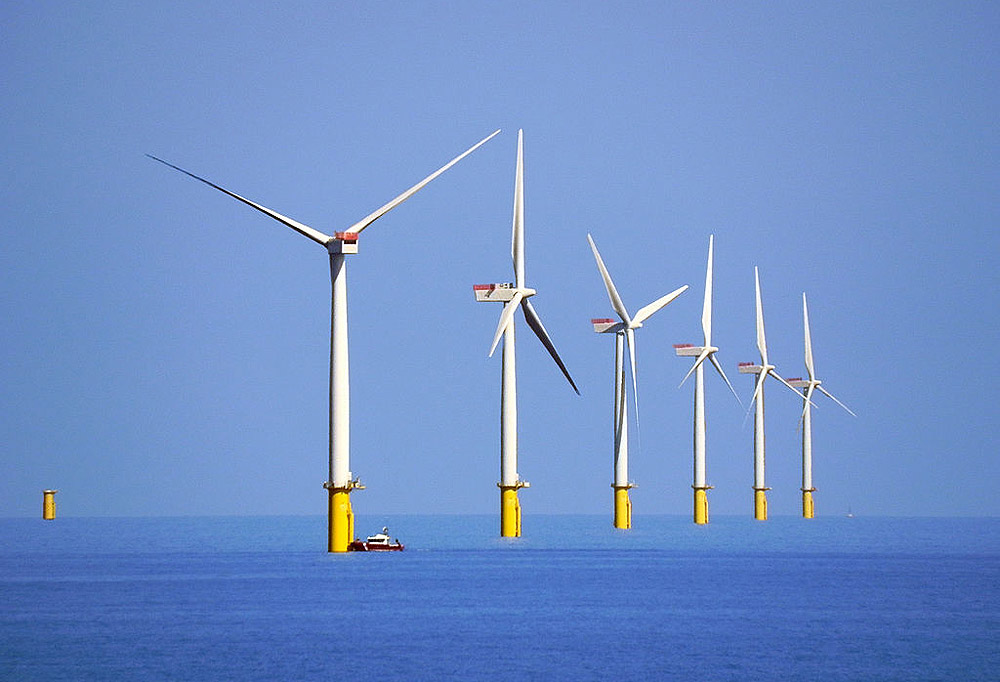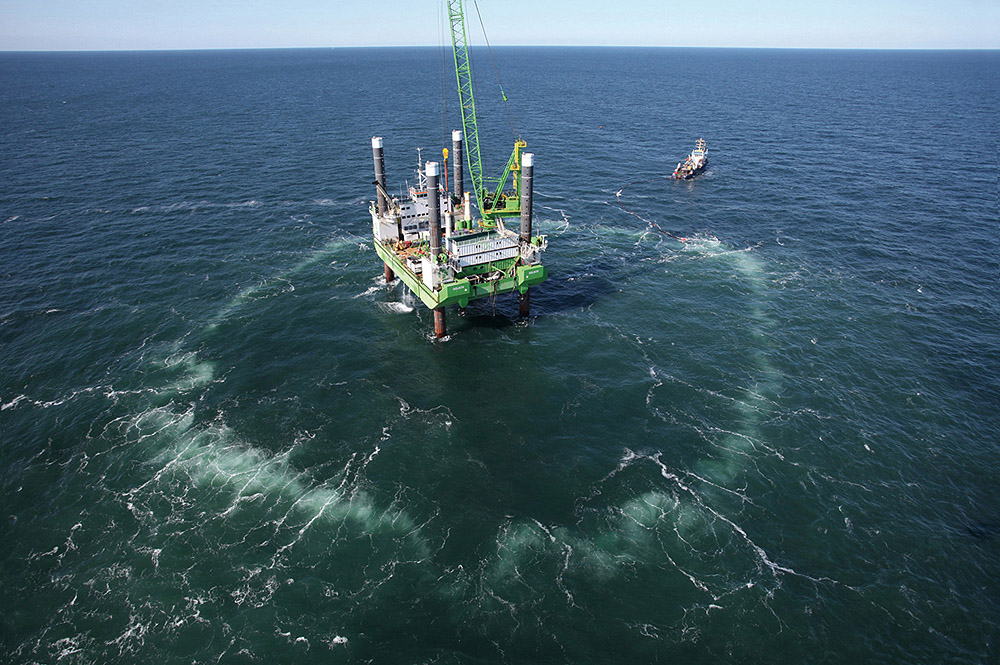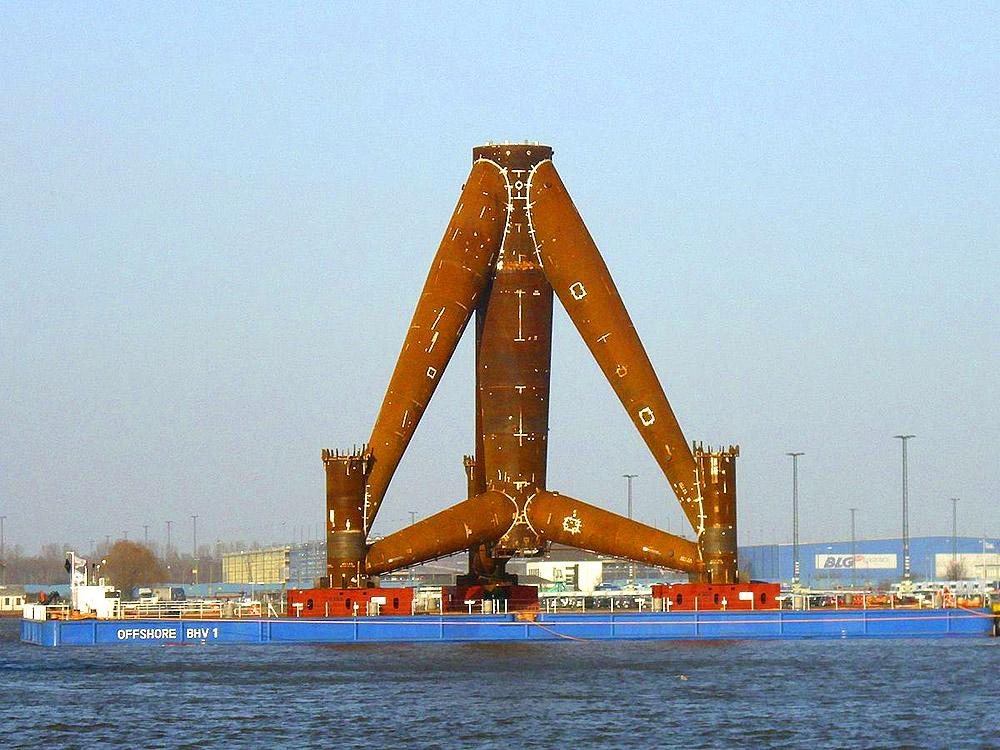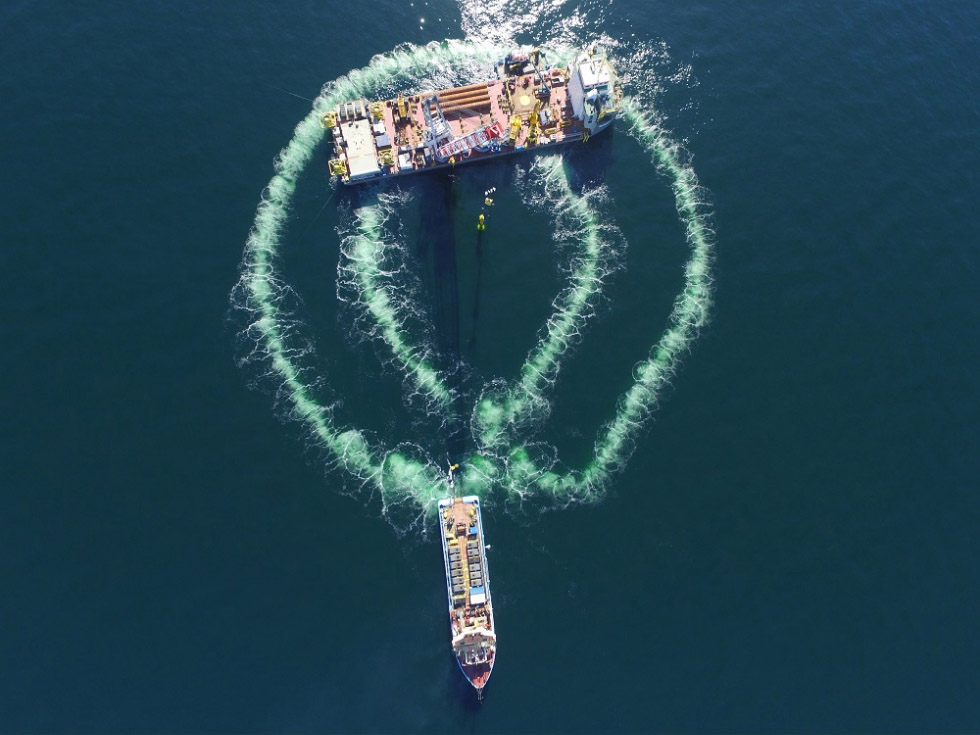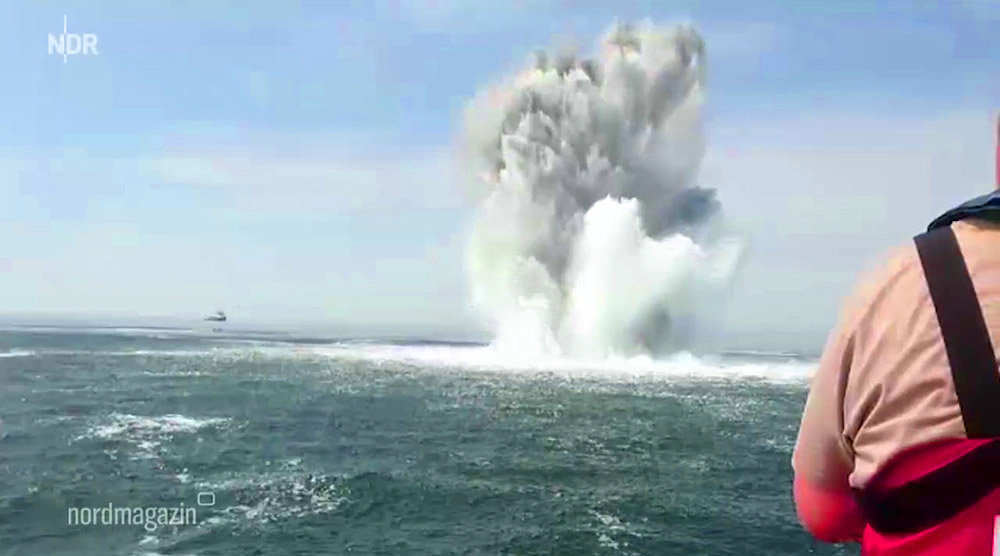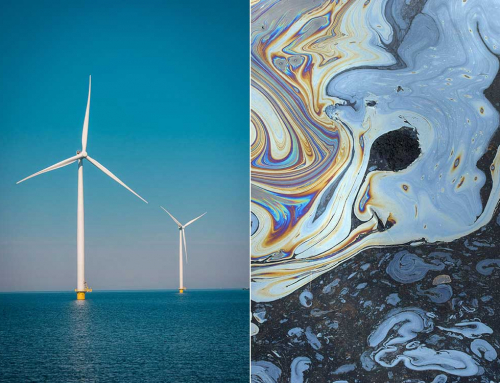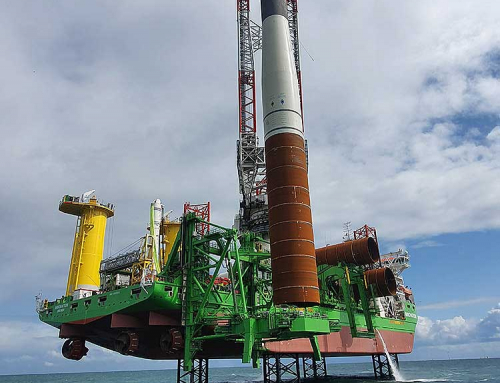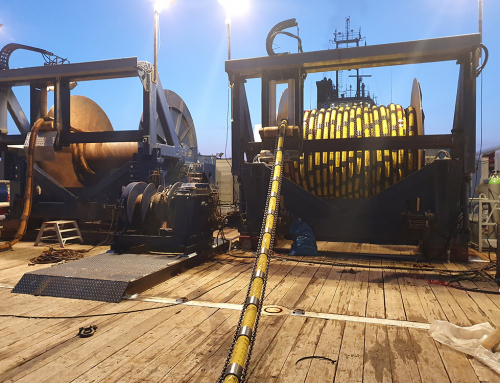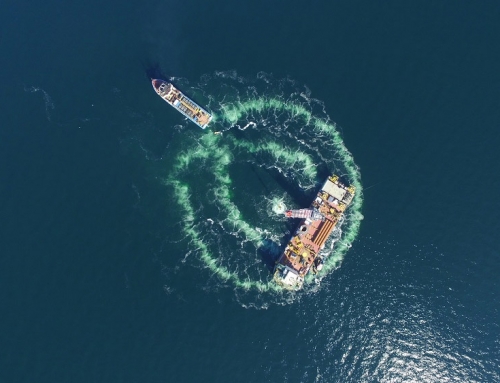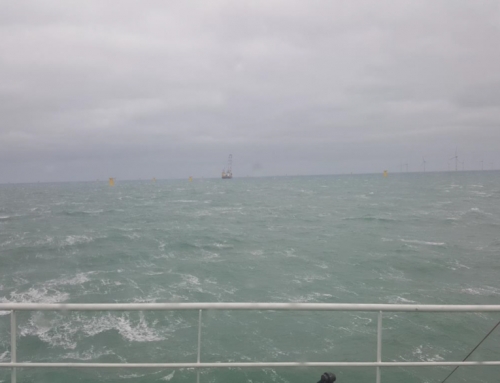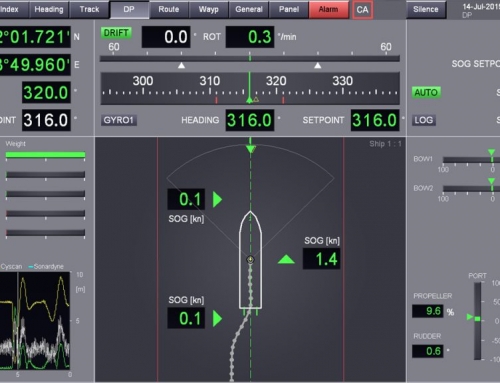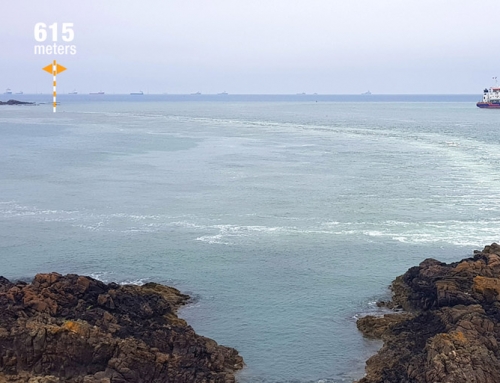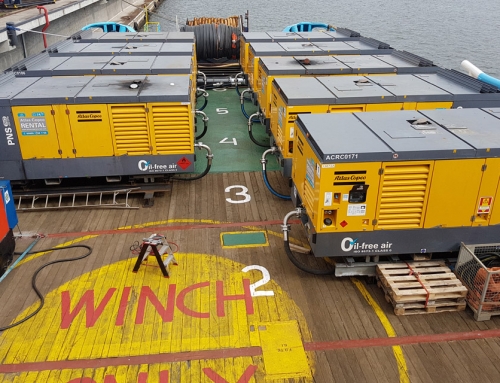Today the Big Bubble Barrier is “state of the art”
The Big Bubble Barrier was used in the systemic construction process for the first time in 2011 when the foundations of the Trianel wind farm in Borkum were set up, and it was further developed to the “state of the art”. A great achievement for environmental protection, as it was said in the building permits, is that one should try to minimize the hydro noise during pile driving. Today, soundproofing to protect marine animals is a prerequisite for obtaining a building permit for an offshore wind farm.
The offshore wind farm industry was comparatively young at the time
In 2008, the Alpha Ventus construction site was used as a test field for offshore wind energy use. It should provide a broad base of experience and knowledge for further offshore wind farms’ construction and operation. Among other things, tripods for founding wind turbines were tested there.
Various bubble curtain systems have also been used with varying degrees of success. The Big Bubble Barrier ultimately proved itself due to its large distance from the sound source. That brought safety in case of drifting through currents. Another decisive factor was its independence from other trades in the laying, operation, and re-connection of the nozzle hose.
Borkum West II, today Trianel Windpark Borkum, followed in 2011 with the first commercial use of tripods on a large scale. 40 tripods were anchored on the seafloor with 3 piles each in the first construction phase. 120 times had to be rammed in this marine region.
Serious damage to all marine animals was to be feared
Thanks to the operator consortium led by Trianel GmbH, the companies BioConsult and ITAP, the University of Hanover, the Federal Ministry for the Environment, and, last but not least, the engineering company HYDROTECHNIK LÜBECK GMBH, the Big Bubble Barrier was able to be integrated into the systemic process of the construction phase under realistic conditions, be researched and further developed on a large scale. For the first time, it was possible to comply with and even fall below the specification of a maximum of 160 db hydro noise as standard.
Trianel Windpark Borkum created the basis for further developing the system up to today’s “state of the art”.
In the meantime, depending on the requirements, up to 2 hose rings are placed around a ramming point, and special compressors are used that generate oil-free compressed air. The Big Bubble Barrier is used worldwide not only for pile driving but also for underwater ammunition blasting.


